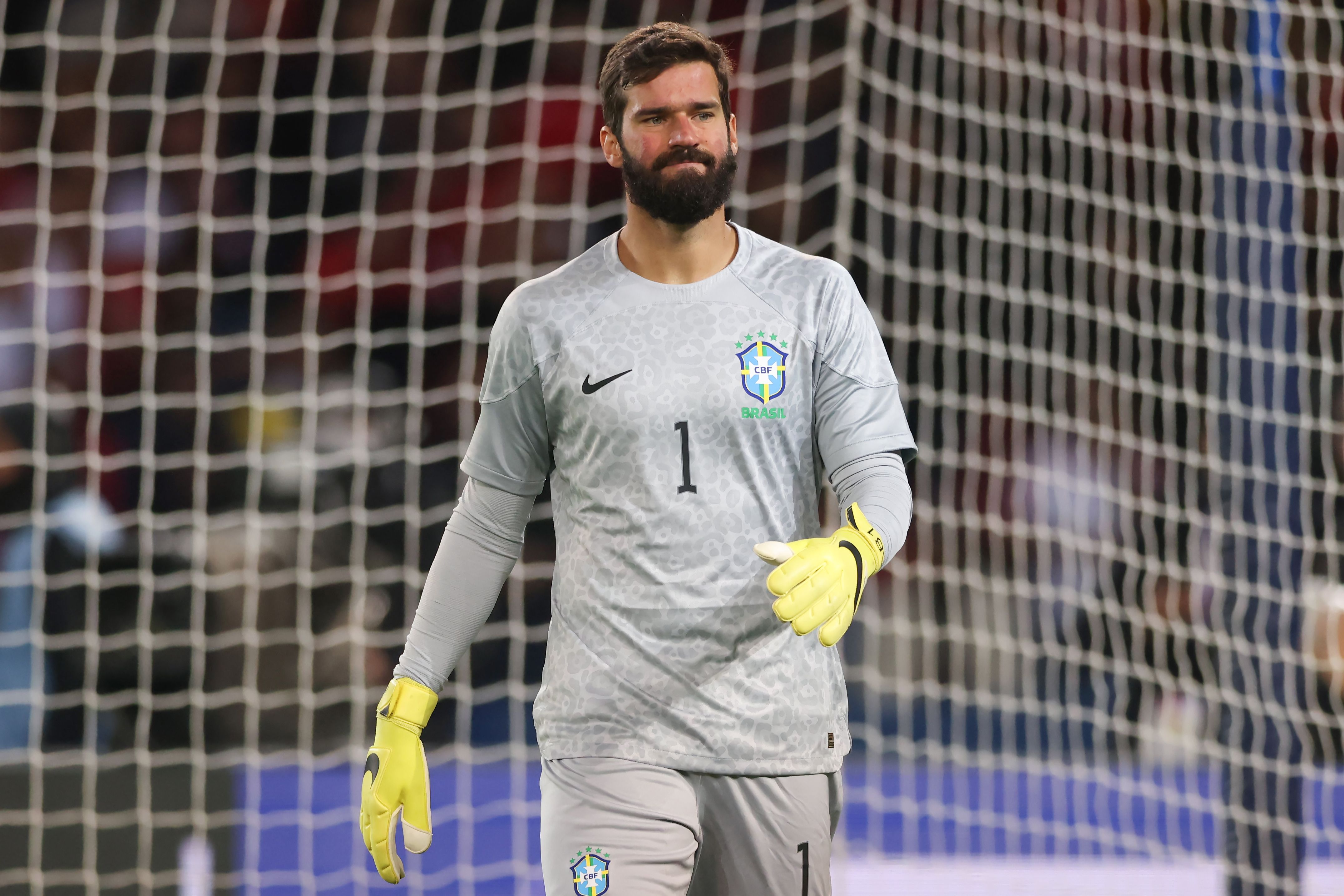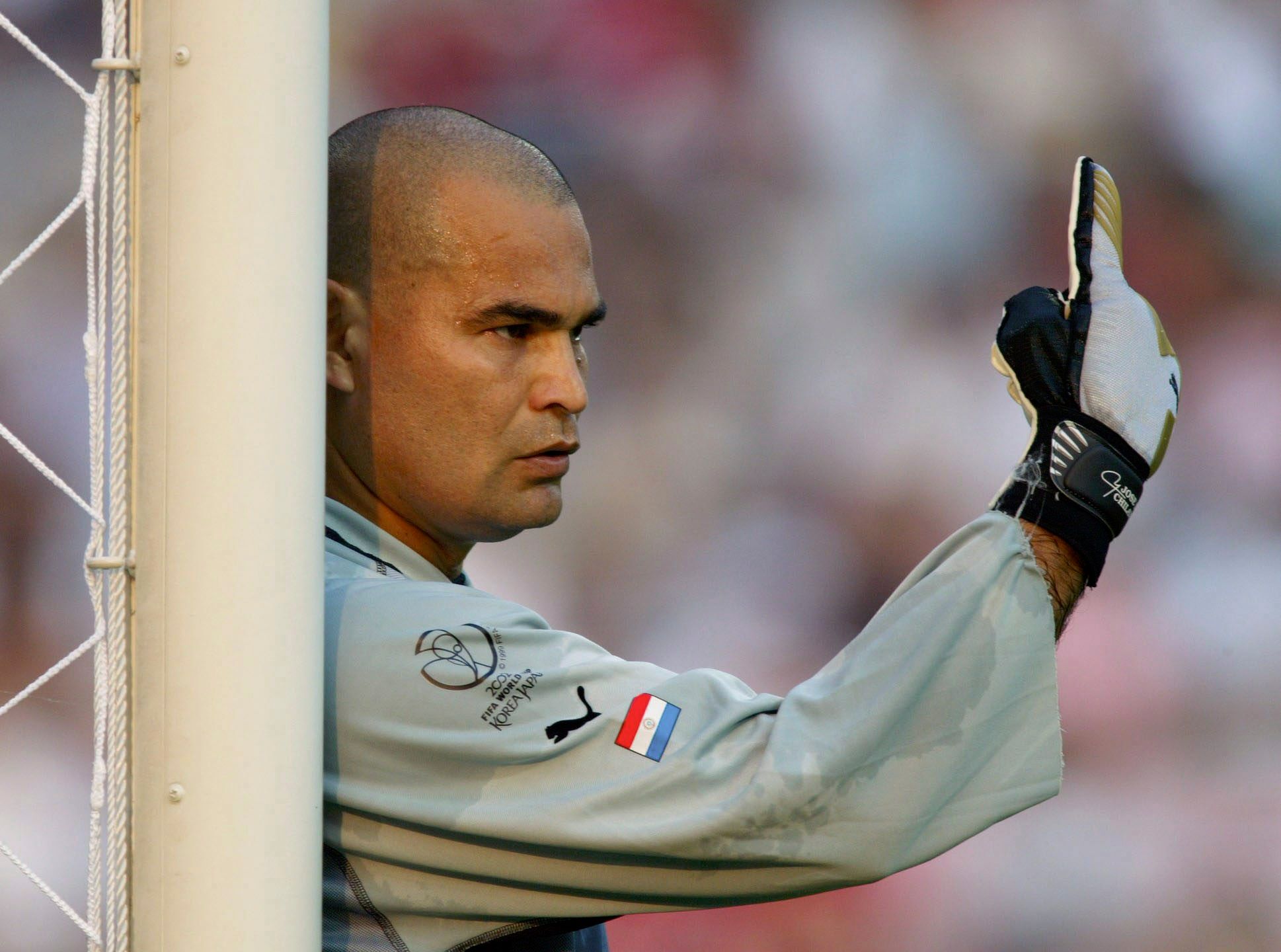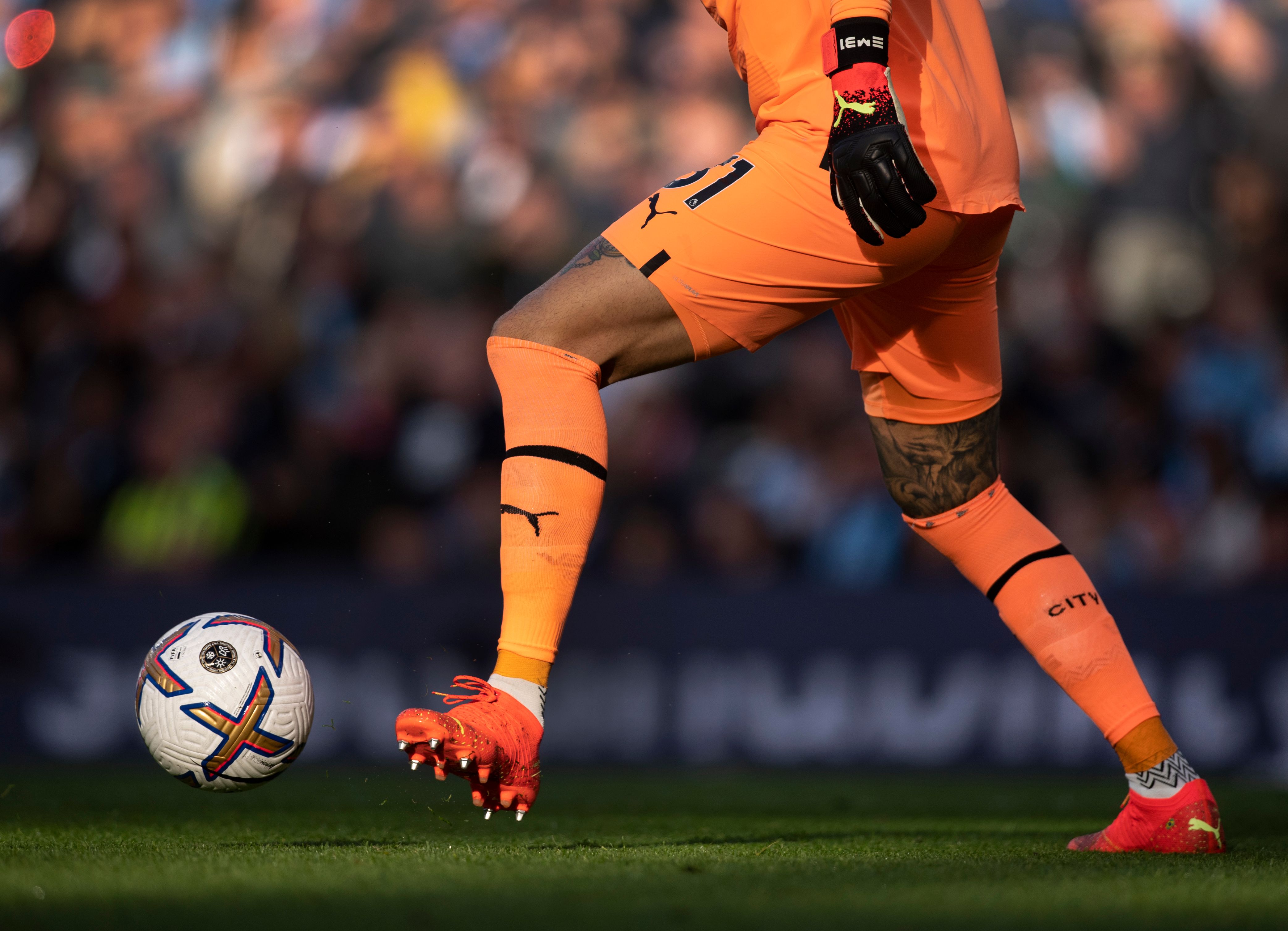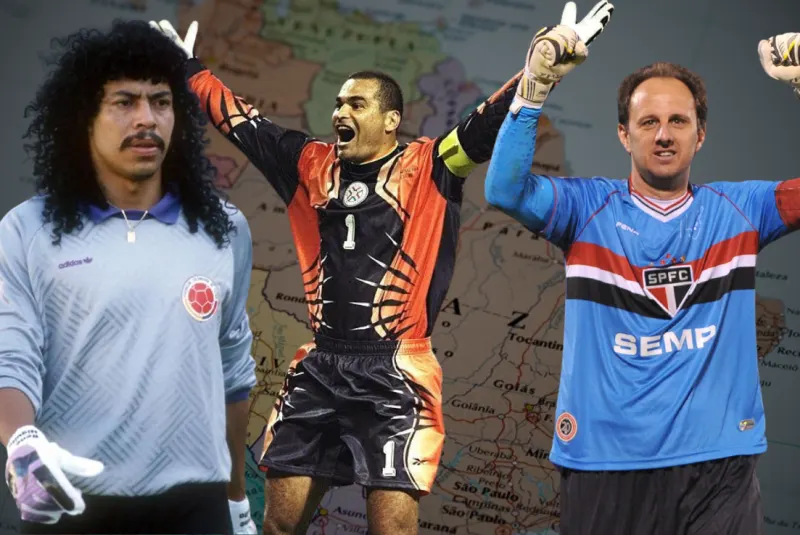Analysing the evolutionary benefits that the South American game has brought to goalkeeping…
“And now something I’ve found to remind you how it should be. When you are a kid, it’s easy. You are not afraid to try, to dare. You do it, just because you like it. So, my advice to you is.. Never grow up my friends!”
Eric Cantona was not directly talking about South America, but he could’ve been.
Introducing a Nike advert from their famous “Joga Bonito” marketing campaign leading up to the 2006 World Cup, aptly enough featuring Brazilian legend Ronaldinho, the Frenchman may have unwittingly stumbled upon a synecdoche for the very soul of the South American continent, a soul that is best marketed worldwide through the medium of what Pelé referred to as “O jogo bonito”, the beautiful game: Football.
Football there is just, well, different. Learnt on the streets and the beaches of cities like Rio de Janeiro, Buenos Aires, Montevideo and Bogota, the game carries a certain swagger that it doesn’t in other places, a rhythm that runs through South American cultures that can be found in its music, dance, and social celebrations like carnaval.
The eccentricity that runs through the continent is also found in abundance at the highest levels of the professional game. From former Colombia captain Carlos Valderrama’s wild blond afro to the furious chaos of Diego Maradona, South America’s football has been marked by a plethora of outspoken mavericks who like to play and live their life on their own terms.
This unique and combustible blend of eccentricity also extends to goalkeepers. Already renowned around the world for routinely being a little bit out there compared to outfield players, South American goalkeepers add a little extra flavour to the equation and have made their mark at home and abroad.

Rogerio Ceni is perhaps best known to European audiences for his heroic goalkeeping performances in the 2005 Club World Cup for Sao Paulo, the Brazilian making several heroic saves as the Copa Libertadores defeated Champions League winners Liverpool in the final. He is also known for being the highest scoring goalkeeper in football history, amassing an astonishing 129 goals over an 18 year career, a Guinness World Record.
O goleiro artilheiro (The sharp-shooting goalkeeper) was most definitely a pioneer in terms of goalkeeping, combining world-class ability and technique with expert set piece prowess, the vast majority of his goals coming from free kicks and penalties.
However, an eye for goal doesn’t come without risk. In 2002, in a game against Fluminense, the eccentric Brazilian scored a trademark 25-yarder and ran away to celebrate with the delirious Sao Paulo fans, not realising that Fluminense were restarting the game (and scoring) behind him.
*
Now for a quiz question: what do Faustino Asprilla and Diego Maradona have in common? The correct answer is that they have both been punched in the face by madcap Paraguayan goalkeeper José Luis Chilavert.
If one were to look up eccentricity in the dictionary, Chilavert’s face would be the accompanying image. Not only prone to physical outbursts, further illustrated by his suspended prison sentence for attacking a physiotherapist, El Buldog, a nickname bestowed on him for his love of wearing a cartoon imprint on his goalkeeper kit, also landed himself in hot water by getting involved in politics.

Not content with being removed from punditry duty on South American channel Univision for accusing CONMEBOL president Alejandro Dominguez of corruption, the loose cannon Chilavert also made homophobic comments towards a British diplomat and routinely openly called out the corruption of his country’s politicians, even running for election himself last year and obtaining 1% of the vote.
On the field, Chilavert was as unpredictable as he was off it. Perhaps most famous for his nine season stint at Argentinian outfit Velez Sarsfield, El Buldog also spent time in Europe with Real Zaragoza in Spain and RC Strasbourg in France, becoming a pioneer in the goalkeeping world with his goals from free kicks and penalties and even the first goalkeeper in history to score a hat trick.
He finished his career with 67 goals. Eight came for his national team in World Cup qualifiers and friendlies. Although eventually surpassed by the aforementioned Rogerio Ceni, Chilavert can lay claim to being the first of the goalscoring goalkeepers, exhibiting all of the spontaneous combustibility you’d expect from someone who takes pride in his nickname.
*
Friends with Pablo Escobar? Check. Friends with Diego Maradona? Check. As Rene Higuita once said in an interview on a Colombian chat show, he is indeed “Friends with everyone”, even including powerful drug lords and cartels.
Whilst not as prone to violence as Chilavert, Higuita was also no stranger to run-ins with the authorities. He was famously arrested and sentenced to seven months in prison for his part in a kidnapping plot in 1993, even though he had no role in the event itself, merely acting as an intermediary between drug barons Pablo Escobar and Carlos Molina.
He secured the release of the latter’s daughter by delivering the ransom money to the former and being paid for his services, which is illegal under Colombian law.
On the field, Higuita’s eccentricity shone through in one particularly famous moment, performing his “scorpion kick” save at Wembley in a friendly against England in 1993. As a floated shot came towards him, the goalkeeper swung his legs up behind his head and cleared the ball in spectacular fashion.
So what is it that has made some notable South American goalkeepers so wacky? Consider for a moment their background. Many players on the continent have to overcome incredible disadvantages and adversity to get their shot in the professional game, perhaps giving them a gritty edge in their personality that shines through on the field.
South American players often must learn the game in the streets and other harsh environments where they need to be able to handle themselves on and off the pitch, giving them some distinct advantages in terms of technique and mentality.
When it comes to talking about a goalkeeper’s distribution skills, Manchester City goalkeeper Ederson is often the first to be mentioned, and for very good reason.
The Brazilian, along with compatriot and rival for the Selecao’s number one jersey Alisson Becker, is usually singled out as the best goalkeeper with his feet on the planet, playing in a team that utilises his passing ability to the maximum. Indeed, the former Benfica man is often the orchestrator of Manchester City’s attacking moves. His pinpoint accuracy with both feet allows him to beat the opposition press and set the team’s midfielders free.
So where did he learn to pass the ball like that?
The answer to that question is a simple one. Street football is prevalent in all the big South American metropolises and is so effective in teaching the fundamental techniques of the game that European cities have tried to replicate the environment in the past decade or two. Cities like Paris and London have installed cages in suburban areas for young people to hone their technique and spontaneity on the ball away from the regimented environment of professional academies.
In addition to improving ball control and skill, the informal setting also hones mentality and the ability to overcome challenges.
If you fall over, the ground is hard. There are no referees, so fouls are aplenty and fights too. Only the toughest survive the street environment and the very fact that those that do can sometimes make the jump to the professional game is an extraordinary example of an ever rarer social mobility, and proof that those who make it are often armed with a steely determination and the ability to operate in tight spaces - as Ederson so casually illustrates on a weekly basis for the Premier League champions.

*
You’ve seen the images. Copacabana beach in the sunshine, people playing beach footvolley or even full-on beach football.
When you think of South America, it’s one of the first images that comes to mind - and also a mainstay of any TV montage when a football tournament takes place on the continent. The beach is a vitally important staple of South American culture and the sport of beach soccer, which has its origins on the beaches of Rio, has logically exploded in popularity in the past three decades.
Association football players such as Eric Cantona, but also Brazilian legends such as Romario and Zico, have all tried their hand at the sport, helping to popularise it.
The FIFA Beach Soccer World Cup has taken place since 2005, firstly on an annual basis and then biennially from 2009 onwards. It is a sport that has evolved rapidly, undergoing considerable change in structure and tactics, not least in the role of the goalkeeper.
Ross Ongaro, a former Canadian football player, futsal coach and beach soccer coach, spoke about the increasing importance of goalkeepers in the game at the 2015 FIFA Beach Soccer World Cup:
“In most cases, goalkeepers are now responsible for creating or scoring a large percentage of goals in a competition. [...] It’s the goalkeeper who dictates the pace of play and decides who gets the ball in each attacking move. In doing so, they have to assess whether the team’s main attacker is being marked by the opposition’s second or third best defender, and, if the opposition are showing signs of fatigue, they have to assess whether to speed play up.
"To all intents and purposes, they are like a point guard in basketball or a quarterback in American football. Coaches can map out plays, but it’s the goalkeepers that make the strategic decisions. When we talk about tactical systems in beach soccer, we don’t say 1-3, 2-2 or 4-1 anymore, we say 1-3-1 and so on. These days, goalkeepers play such a big part that you have to include them in formations.”
In Beach Soccer, the goalkeeper only has four seconds in which to decide what to do with the ball, meaning an ever greater necessity to be able to interpret the tactical movements being made in front of them.
Another example is Brazilian goalkeeper Mão, a five-time Beach Soccer World Cup winner with Brazil:
“I always go by the player’s stronger foot. When a right footed player drops out to the right, you know it’s got to be a fast ball. If he’s left footed and on the diagonal, then the throw is longer and flatter. And when the pivot drops into the centre, the ball has to be below knee height so that they can control it, or turn out on goal and spread it out to the wings.
"You could say there’s something mathematical about it. You have to calculate the movement, the time you’ve got and the passes you need to make to each team-mate. We use targets to practise the types of ball you have to throw in matches: parallel, central and diagonal throws. I do 50 to 100 throws a day in training. It’s tiring, but the movement becomes automatic”.
The importance of the goalkeeper in build-up play is therefore arguably even more vital in Beach Soccer than football itself, although players like Ederson show that concepts and techniques in one code can be replicated in another.
Football, and goalkeepers in particular, can and have learnt from other codes of the sport, taking transferable skills from the beach and the street to revolutionise the game as we know it.
Whilst the relentless mechanisation of the game continues at breakneck speed in Europe, South America and the cultures that exist within it persist in developing players with flair, with rhythm and flamboyance honed on its gritty streets and urban sprawls. Ultimately, football isn’t just a game of tactics and structure, but also a game of joy, of improvisation and spontaneity, a game that can be played anywhere and by anyone, no matter their upbringing or character.
What has South America brought to goalkeeping? South American culture pervades its goalkeepers, producing some of the most eccentric, eclectic and technically brilliant number ones the game has seen.
Ultimately, South American goalkeepers can be unpredictable, charming, and technically brilliant, sometimes all in the same day, a product of their environment just like anyone else. There is something childlike about them, they try and they dare, they do things just because they like to do them, just like Cantona said.
Never grow up my friends, but watch out for Chilavert’s stray fists.








